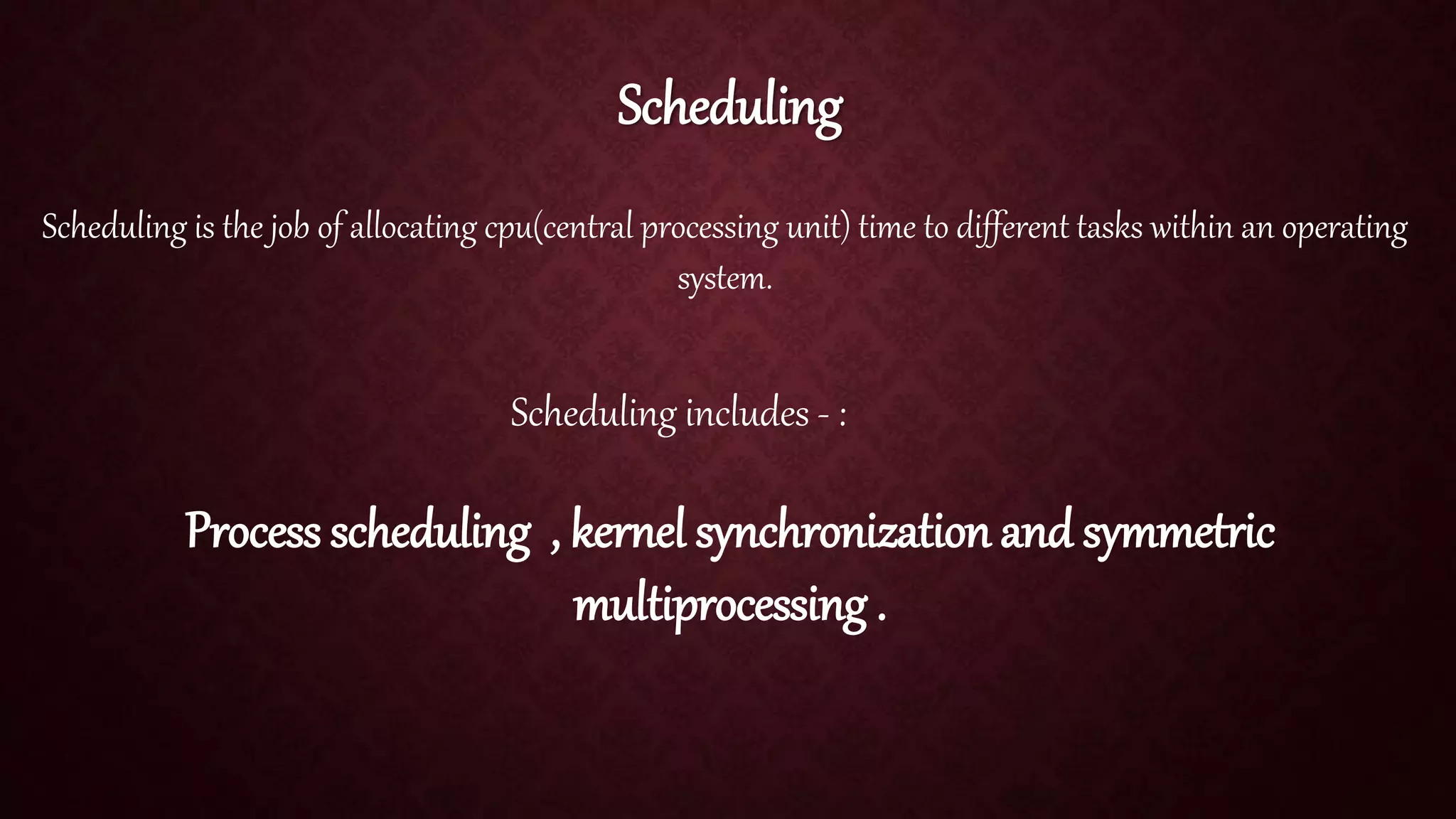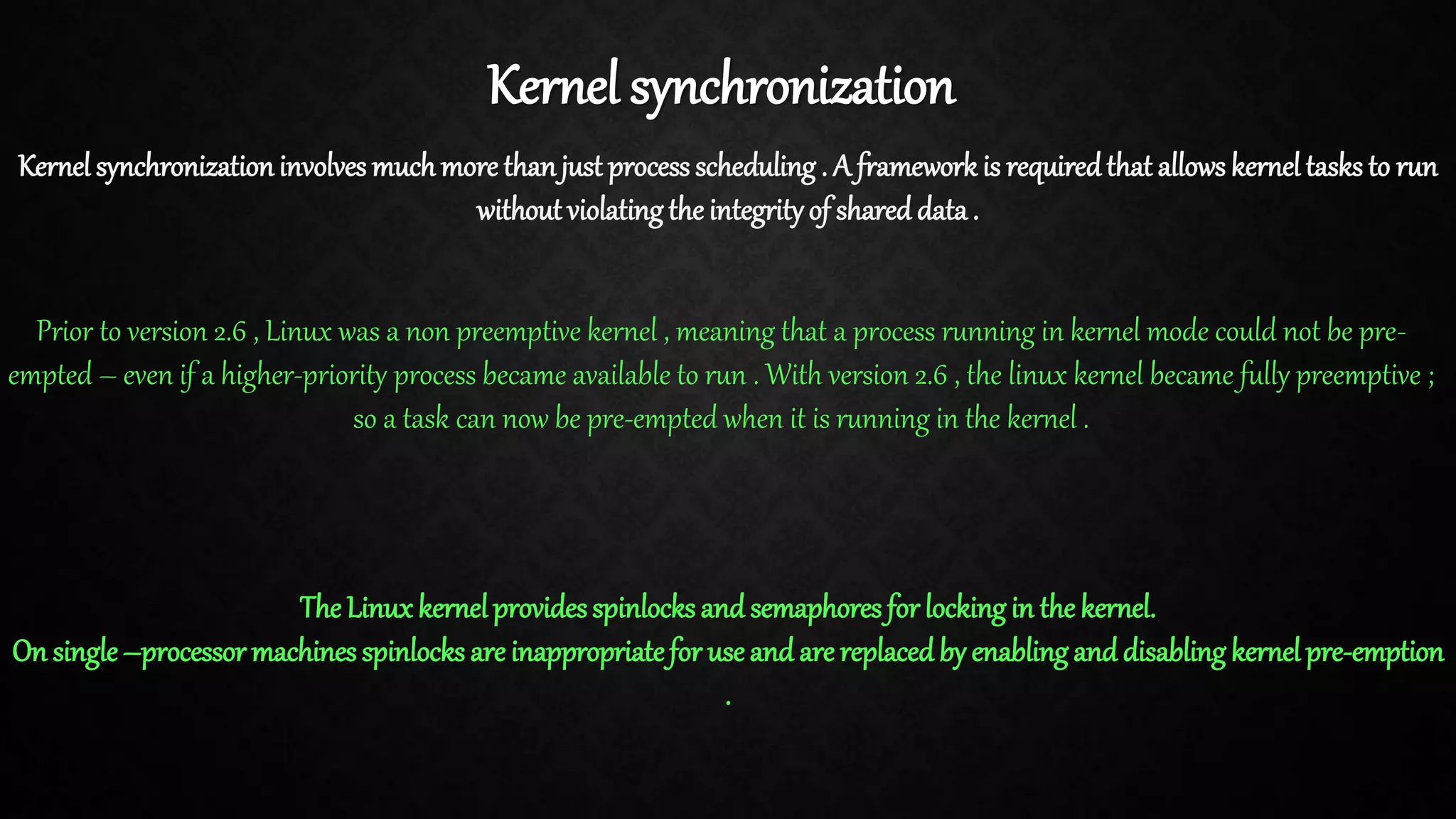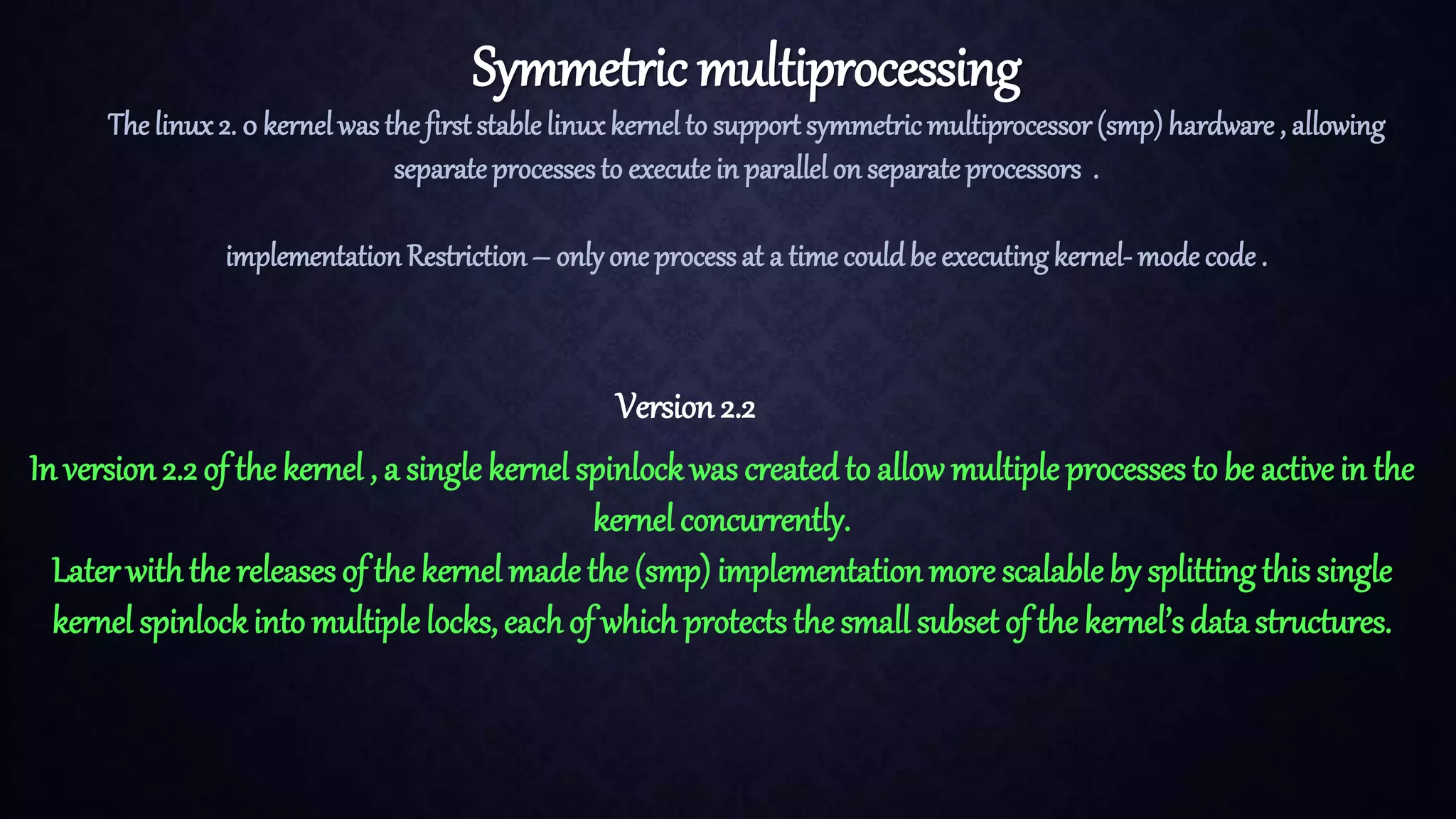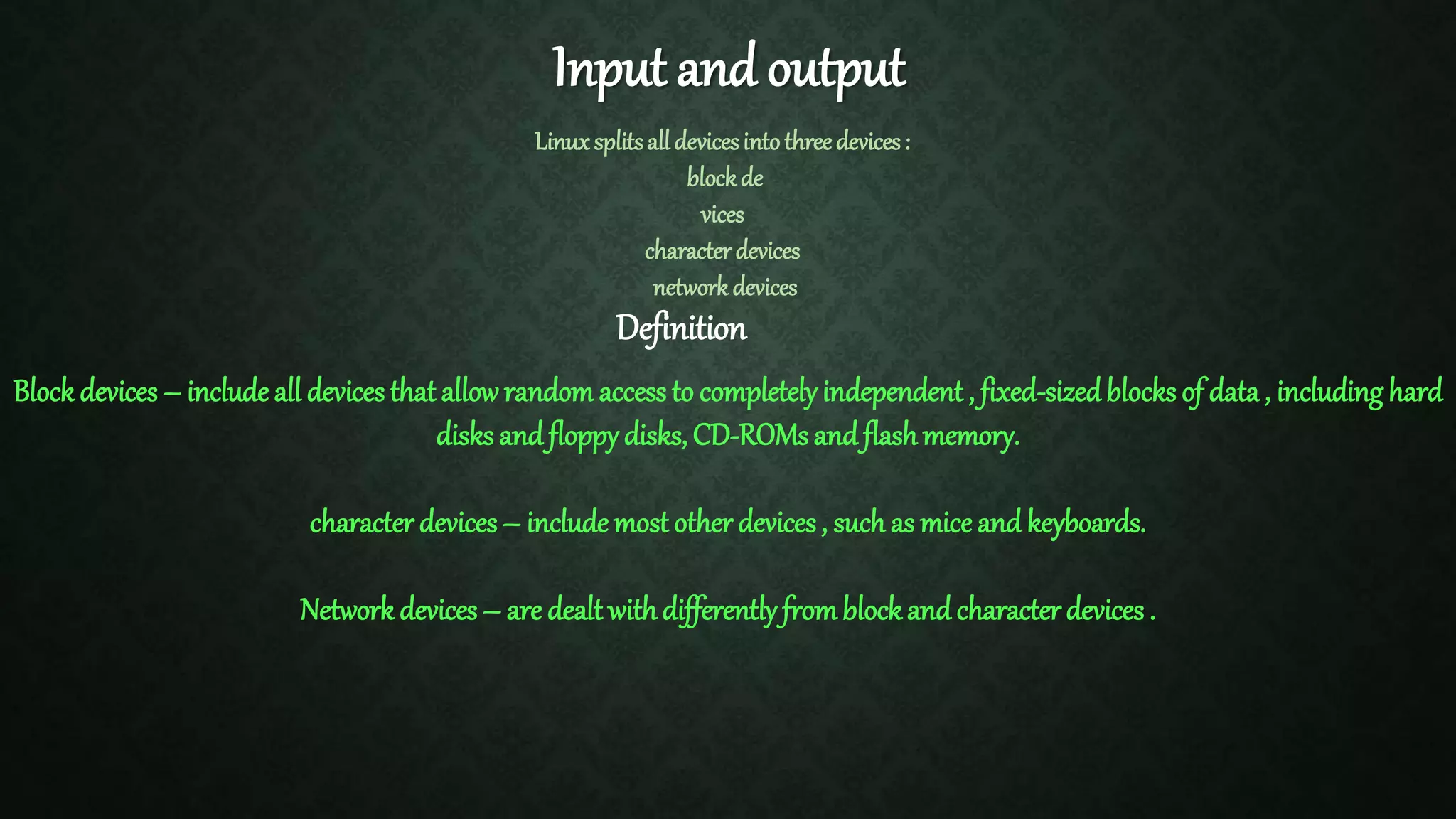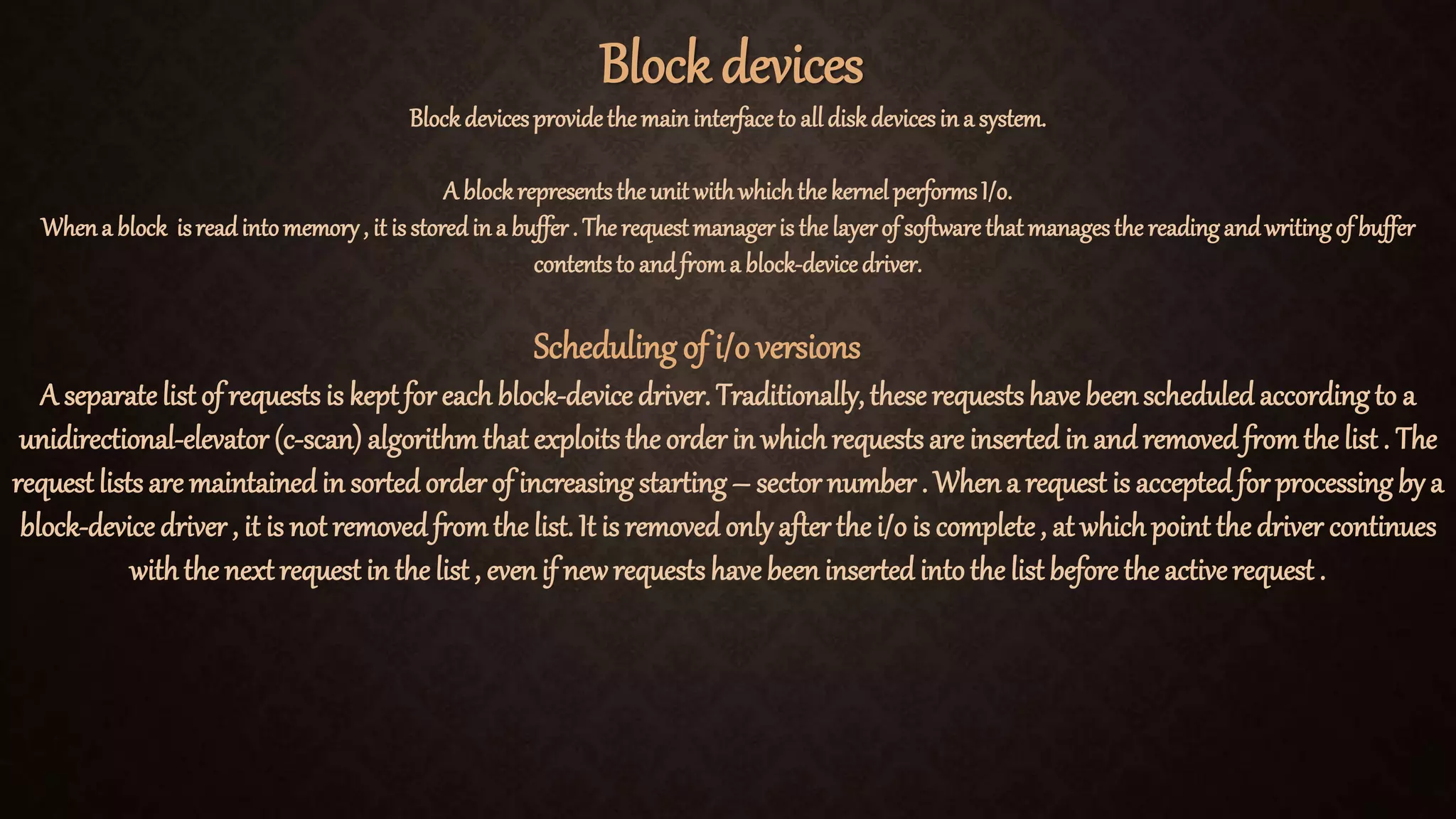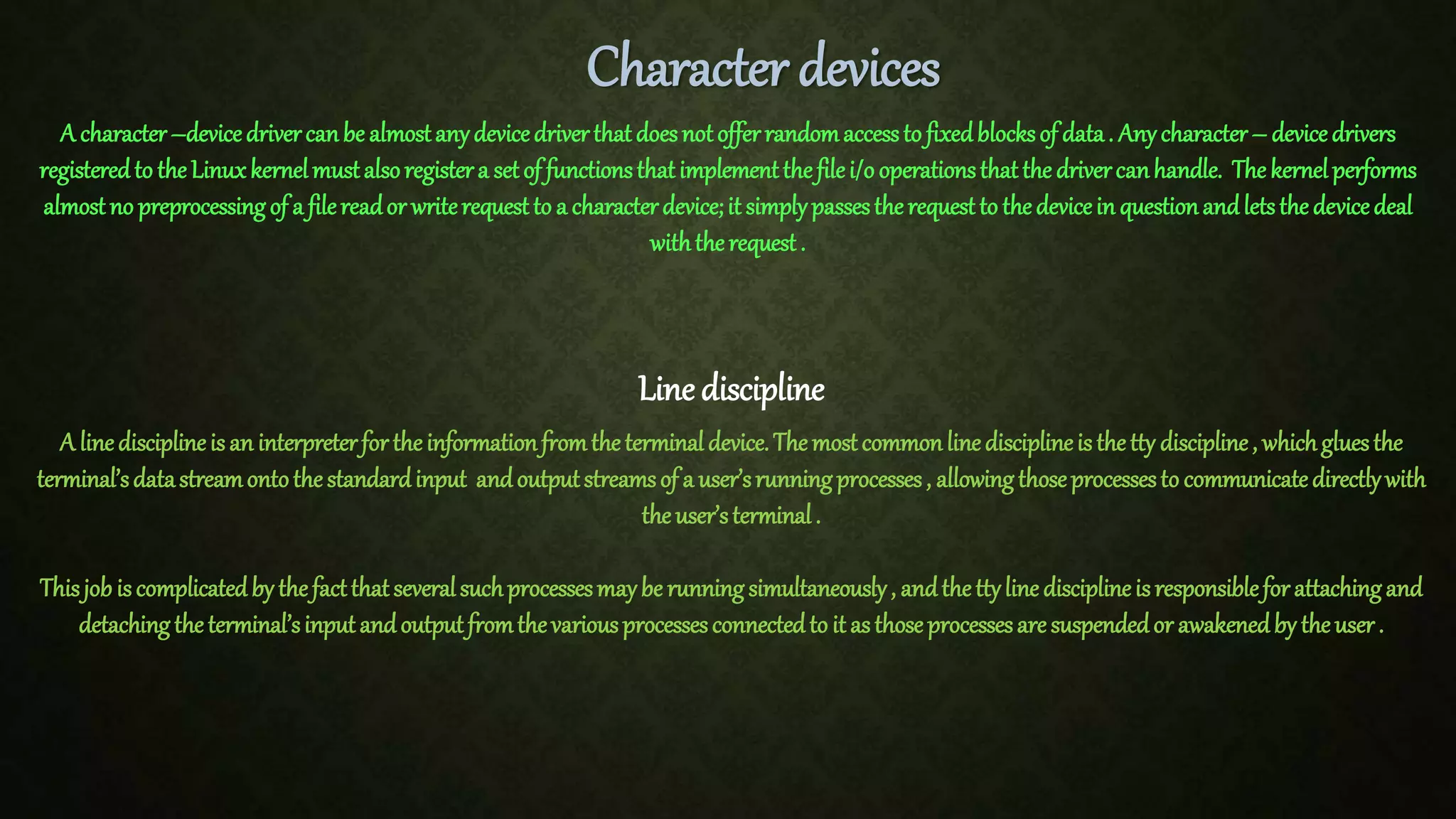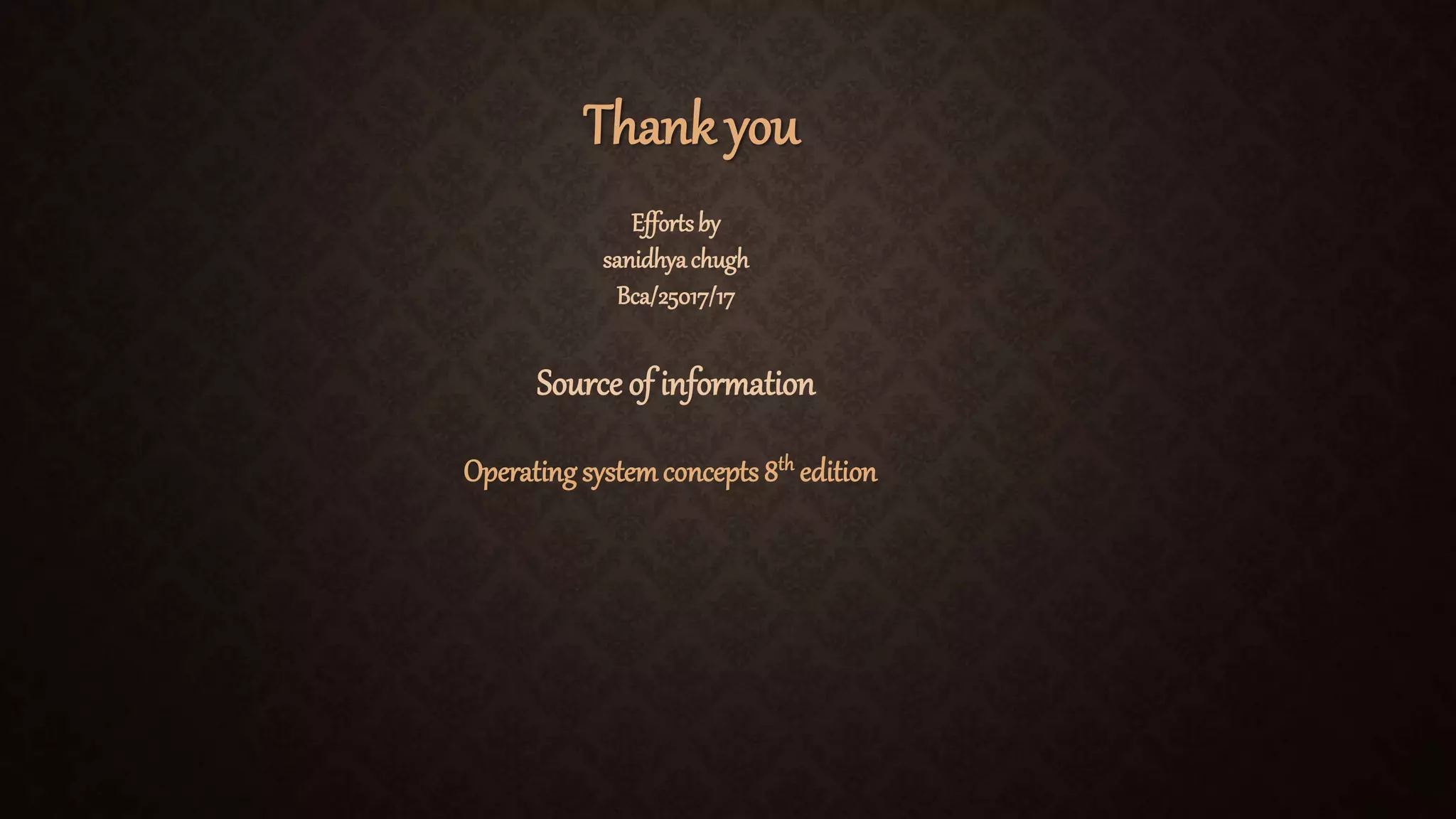The document discusses CPU scheduling in operating systems, particularly focusing on Linux, which features two scheduling algorithms: a time-sharing algorithm for fairness and a real-time algorithm for priority-based scheduling. It explains kernel synchronization improvements made in version 2.6, which enables preemption, and highlights the differences between block and character devices in Linux I/O management. The document also details the handling of device requests and the role of line discipline in managing terminal input and output.
